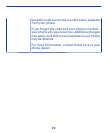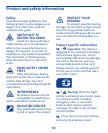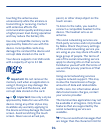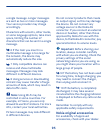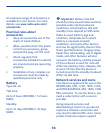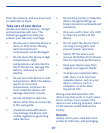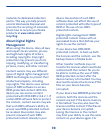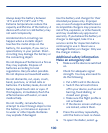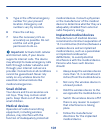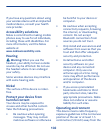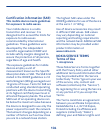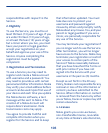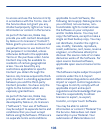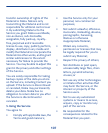
Always keep the battery between
15°C and 25°C (59°F and 77°F).
Extreme temperatures reduce the
capacity and lifetime of the battery. A
device with a hot or cold battery may
not work temporarily.
Accidental short-circuiting can
happen when a metallic object
touches the metal strips on the
battery, for example, if you carry a
spare battery in your pocket. Short-
circuiting may damage the battery or
the connecting object.
Do not dispose of batteries in a fire as
they may explode. Dispose of
batteries according to local
regulations. Recycle when possible.
Do not dispose as household waste.
Do not dismantle, cut, open, crush,
bend, puncture, or shred cells or
batteries. If a battery leaks, do not let
battery liquid touch skin or eyes. If
this happens, immediately flush the
affected areas with water, or seek
medical help.
Do not modify, remanufacture,
attempt to insert foreign objects into
the battery, or immerse or expose it
to water or other liquids. Batteries
may explode if damaged.
Use the battery and charger for their
intended purposes only. Improper
use, or use of unapproved batteries or
incompatible chargers may present a
risk of fire, explosion, or other hazard,
and may invalidate any approval or
warranty. If you believe the battery or
charger is damaged, take it to a
service centre for inspection before
continuing to use it. Never use a
damaged battery or charger. Only use
the charger indoors.
Additional safety information
Make an emergency call
1 Make sure the device is switched
on.
2 Check for adequate signal
strength. You may also need to
do the following:
• Put a SIM card in the device.
• Switch the call restrictions
off in your device, such as call
barring, fixed dialling, or
closed user group.
• Make sure the flight profile is
not activated.
• If the device screen and keys
are locked, unlock them.
3 Press the end key repeatedly,
until the home screen is shown.
4 To open the dialler, select
.
100



